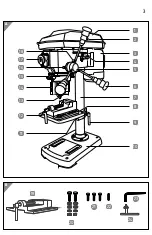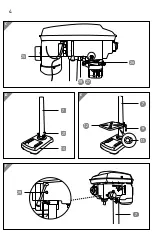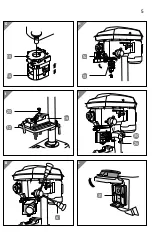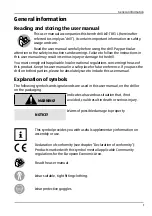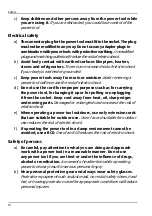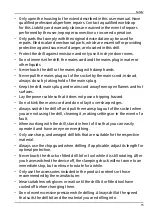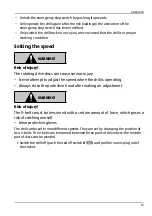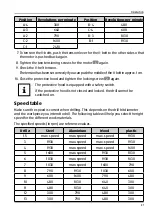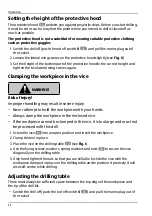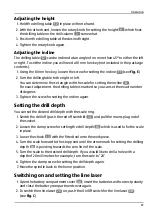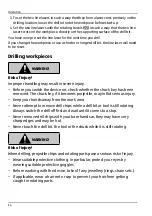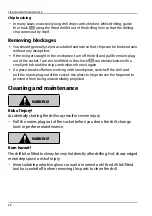
Safety
11
c)
Avoid accidentally activating the device. Make sure that the
power tool is turned off before you connect it to the power
supply and/or the rechargeable battery, pick it up or carry it.
Carrying power tools with your finger on the switch or connecting the
power tool to a power supply while the switch is set to “on” may lead
to accidents.
d)
Remove all adjusting tools or spanners before you switch the
power tool on.
A wrench or a key left attached to a rotating part of
the power tool may result in personal injury.
e)
Avoid an abnormal posture. Keep proper footing and balance at
all times.
This enables better control of the power tool in unexpected
situations.
f)
Wear suitable clothing. Do not wear loose clothing or jewellery.
Keep your hair and clothing away from moving parts.
Loose
clothes, jewellery or long hair can be caught in moving parts.
g)
If there is an option for installing dust suction devices and dust
containers, these should be attached and used correctly.
Use of
dust collection can reduce dust-related hazards.
h)
Do not be lulled into a false sense of security and ignore the
safety rules for power tools, even if you are well acquainted with
power tools, having used them frequently.
Using power tools
without due care and attention can cause serious injuries in a split
second.
Using and handling the power tool
a)
Do not overload the power tool. Use the right power tool for your
work.
The correct power tool will do the job better and safer at the
rate for which it was designed.
b)
Do not use a power tool if its switch is defective.
Any power tool
that cannot be controlled with the switch is dangerous and must be
repaired.
c)
Disconnect the plug from the power source and/or remove the
rechargeable battery from the power tool before making any
adjustments, changing insertion tools or storing the power tool.
Such preventive safety measures reduce the risk of starting the
power tool accidentally.



